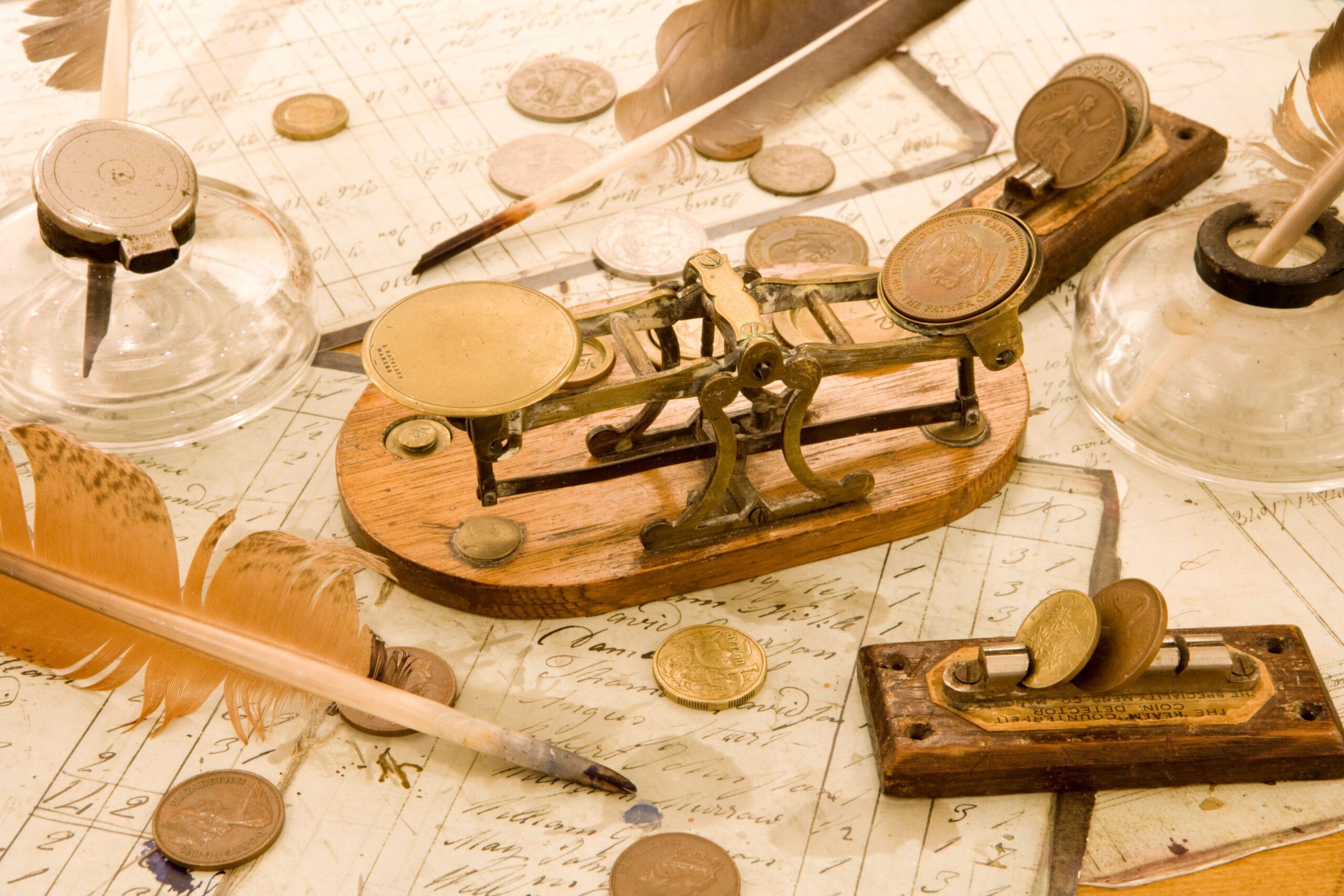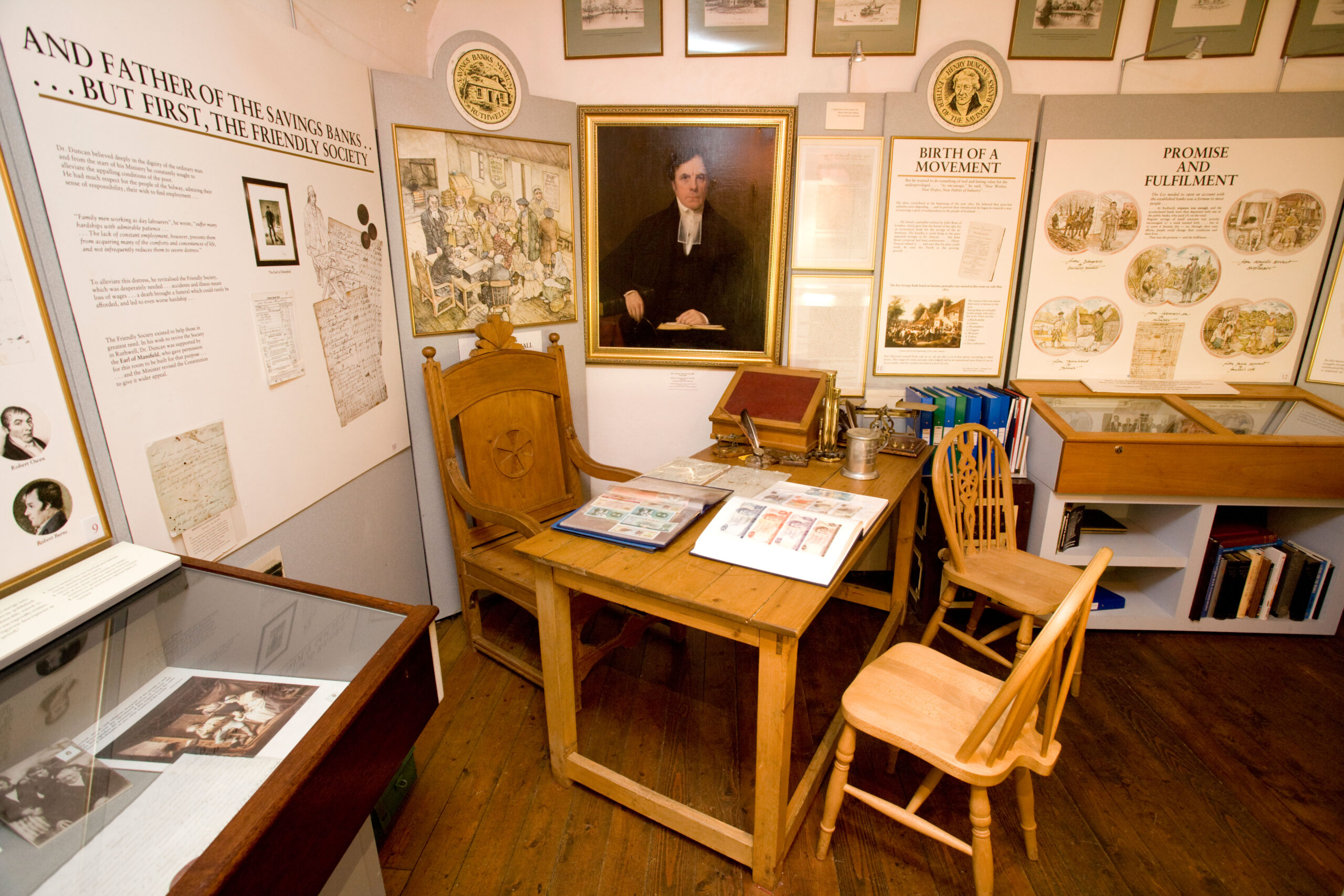Food was so scarce that Henry Duncan decided to import corn from Liverpool and to sell it at cost price. The building would also be used as a grain store. There was some land behind the building and as an auction failed to attract any reasonable bids, the Committee decided to keep the land and sow grain on it. One of the members was paid three shillings to plough, sow and harrow the land.
Museum History
When the Rev Henry Duncan came to Ruthwell in 1799 he found his parishioners were starving. He took over the flagging Friendly Society – an early insurance scheme, paying benefit to sick workers – and he organised the distribution of meal through that Society.
By January of the following year he had obtained from the Earl of Mansfield a derelict building, on condition that the Friendly Society paid for essential repairs. The building would also be used as a grain store.


Our History
1800 (January)
1800 (June)
By June the building was almost ready for occupation, the Committee and some of the members having helped. New window panes and shutters were installed. Members of the female Friendly Society were given the task of cutting peat for the fire.
1800 (October)
The building was ready for use all that remained was to provide seating. Timber was to be obtained from the local wood and seats made. However, perhaps due to shortage of funds to buy timber, the seats were not ready until the following year.
1810
It was in this Society Room that in 1810 Henry Duncan put to the Friendly Society his ideas for a parish savings bank, a movement which flourished and eventually spread throughout the world.
1814
At a cost of eighteen shillings and sixpence (about 82p) very expensive for the time, a chair commissioned for Henry Duncan was finished. That it has remained in the Society Room for almost two hundred years is witness to the fact that it is a sturdy chair, if not an elegant piece of furniture.
1875
The Ruthwell Parish Bank transferred it services to the nearby town of Annan. The Society Room continued as a village hall. Meetings, weddings and funerals were free, apart from cleaning costs. Concerts or entertainments were charged five shillings (25p) per night, classes at five shillings per week. One half of the building fell into disrepair and the neighbouring farmer used it to store his tractors and other farm equipment.
1946
One hundred years after the death of Henry Duncan in 1846, the Scottish Trustee Savings Banks provided chairs and a table for the Society Room, so that it could be used for the Sunday School.
1953
In 1953 the Earl of Mansfield offered to sell the half the building. The Scottish Area of the TSB could not hold property and they offered to present the building to the Savings Banks Association. The Scottish Area would have responsibility for maintenance and might consider using the building as a museum. On 15 May 1953 the deal was concluded and the building was insured for £250 against fire, by the Caledonian Insurance Company. The rateable value was £2.10s.0. (£2.50) per annum.
1974
The Earl of Mansfield presented the other half of the building to the TSB Association in 1974, the museum was opened by Henry Duncan's great great great grandson Henry Duncan from Woodstock, Ontario, and a cottage was provided for a custodian.
1986
The flotation of TSB in 1986 engendered enormous interest in the museum and provided another reason for upgrading the building. The old peat fire with the kettle on the hob, the wooden benches and the meal 'kist' gave way to modern display boards and display cases, the latter essential for the preservation of the old documents and artefacts. The cost this time amounted to tens of thousands of pounds. Since then, re-slating of part of the roof and general redecoration has been carried out and the uneven paving has been re-laid.
1995
The TSB name was phased out of use following the merger of the Trustee Savings Bank and Lloyds Bank in 1995, resulting in the formation of Lloyds TSB in 1999. The new business continued to maintain and care for the building.
2013
Following the banking crisis in the early 2000's the TSB name would return to the UK banking sector as a standalone retail banking business with 632 branches.
2015
On 12 March 2015, TSB confirmed a takeover bid by Sabadell for £1.7 billion, less than a year after it rejoined the stock market. In October 2015, Sabadell Group outlined its plans for TSB to continue as a competitor in the UK banking sector, by further expanding into the small business banking market, and introducing cardless emergency cash and mobile payments.
2020
The museum shut to the public during the Covid-19 pandemic.
2021 (May)
TSB announce plans to close the Savings Banks Museum permanently and move some of the contents to its Edinburgh headquarters.
2021 (November)
A deal has been agreed in principle for the transfer of a museum at the site of the world's first savings bank. The TSB said that following talks it had come to an agreement with Comlongon Estate Ltd to take over the site. The company is part of a group which runs tourism and hospitality businesses including the Annandale Distillery and the Globe Inn in Dumfries.
2024
The newly renamed Henry Duncan Savings Banks Museum re-opens to the public on February 26th, offering tours 5 days a week.
Henry Duncan Savings Banks Museum © 2024. All Rights Reserved
Privacy Policy / Terms of Use


